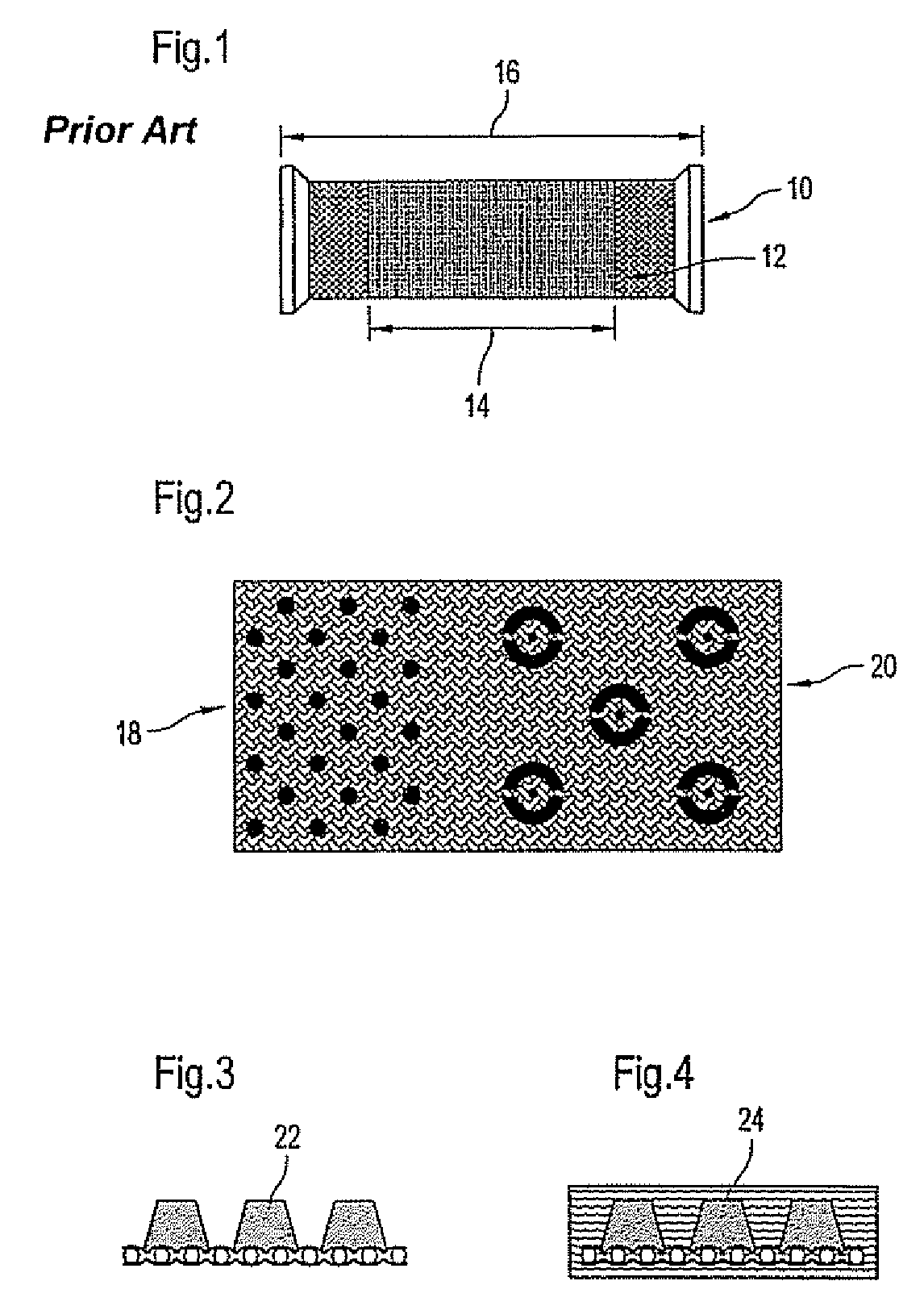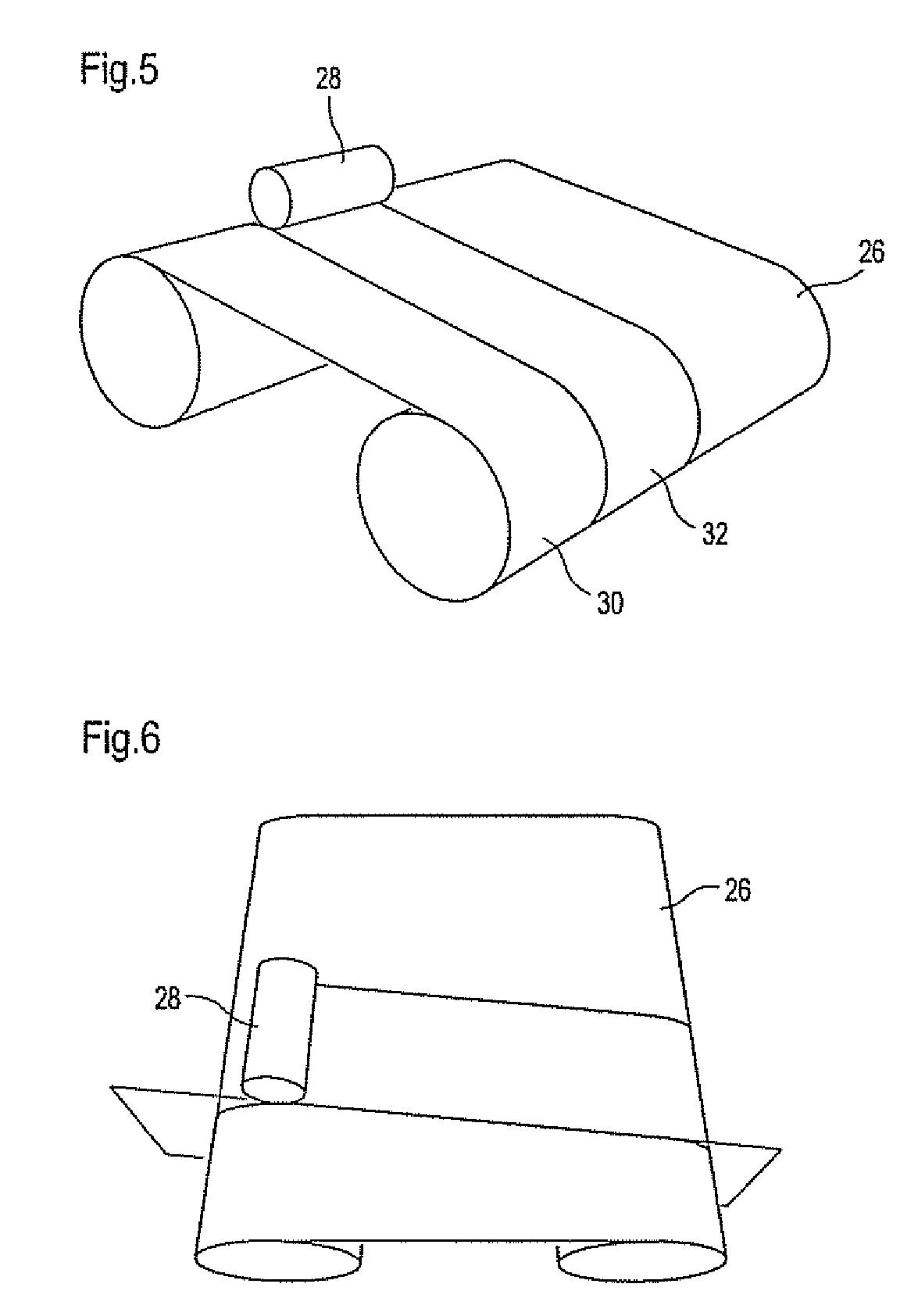Method for producing topographical pattern on papermachine fabric by rotary screen printing of polymeric material
a polymeric material and topographical pattern technology, applied in the direction of liquid/solution decomposition chemical coating, application, instruments, etc., can solve the problems of prone to deterioration, the technique of weaving does not permit the production of complex topographical patterns, and the standard rotary screen cannot be used to transfer topographical features, etc., to achieve accurate topographical pattern application and pattern matching system, maintain the quality of decorative tissue or decorative paper, and maintain the effect of quality standards
- Summary
- Abstract
- Description
- Claims
- Application Information
AI Technical Summary
Benefits of technology
Problems solved by technology
Method used
Image
Examples
Embodiment Construction
[0048]The particulars shown herein are by way of example and for purposes of illustrative discussion of the embodiments of the present invention only and are presented in the cause of providing what is believed to be the most useful and readily understood description of the principles and conceptual aspects of the present invention. In this regard, no attempt is made to show structural details of the present invention in more detail than is necessary for the fundamental understanding of the present invention, the description taken with the drawings making apparent to those skilled in the art how the several forms of the present invention may be embodied in practice.
[0049]FIG. 2 shows two exemplary embodiments of the invention with a topographical pattern in the form of a dot pattern 18 and a topographical pattern in the form of a motif pattern 20.
[0050]The topographical pattern 18, 20 can therefore assume the form of a unique motif or a symmetric matrix of polymer dots, for example....
PUM
| Property | Measurement | Unit |
|---|---|---|
| viscosity | aaaaa | aaaaa |
| viscosity | aaaaa | aaaaa |
| height | aaaaa | aaaaa |
Abstract
Description
Claims
Application Information
 Login to View More
Login to View More - R&D
- Intellectual Property
- Life Sciences
- Materials
- Tech Scout
- Unparalleled Data Quality
- Higher Quality Content
- 60% Fewer Hallucinations
Browse by: Latest US Patents, China's latest patents, Technical Efficacy Thesaurus, Application Domain, Technology Topic, Popular Technical Reports.
© 2025 PatSnap. All rights reserved.Legal|Privacy policy|Modern Slavery Act Transparency Statement|Sitemap|About US| Contact US: help@patsnap.com



